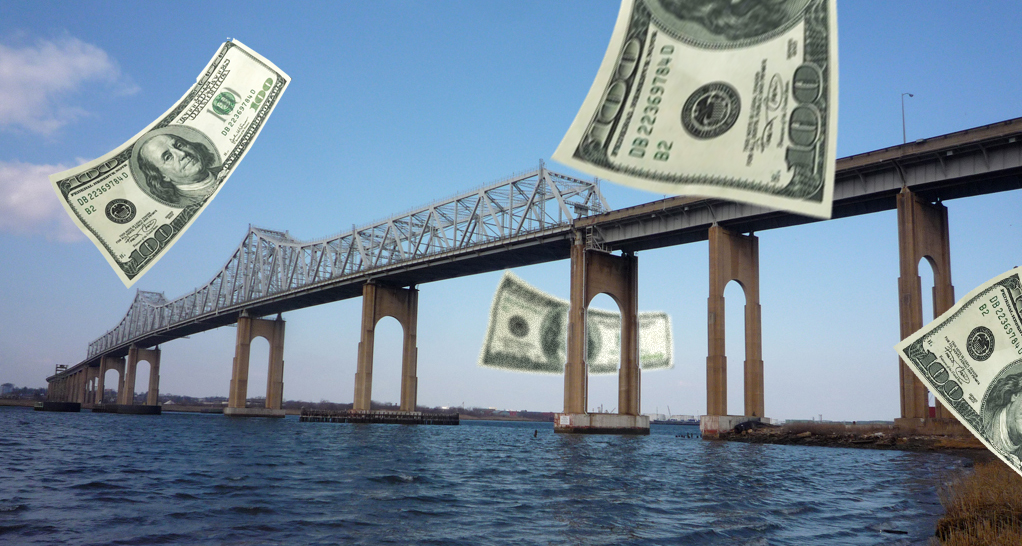The Port Authority is about to spend $8.3 million to study something that's already well understood: widening the Outerbridge Crossing in the hope of easing traffic between Staten Island and New Jersey will actually trigger more congestion.
But the agency, which manages the bi-state span, is required by a 2021 state law to do the study anyway — and dutifully approved a contract with engineering and architecture firm HDR during a Thursday board meeting.
Predictably, transportation wags on Twitter chimed in to say the agency was burning money — and the climate.
I’ll save you $8.3 million. Widening the bridge will not do anything to relieve congestion and will simply encourage more driving at a time when we should be seeking to reduce it instead. https://t.co/MulIQ9wDjx
— Second Ave. Sagas (@2AvSagas) September 21, 2023
Disband the Port Authority https://t.co/fvc3mfhaEB
— Market Urbanism @stephenjacobsmith@mastodon.social (@MarketUrbanism) September 21, 2023
The multi-million-dollar research will examine find ways to relieve congestion and improve traffic flow on the Outerbridge, a requirement stemming from a bill by Rock Republican state Sen. Andrew Lanza. Specifically, HDR will look at the cost of widening the nearly century-old span, whether that means expanding the existing two 10-foot lanes in each direction to meet federal standards of 12 feet or adding more lanes.
If history is any evidence, it could backfire and cause more traffic.
Decades of prior research shows that building out car infrastructure only encourages more driving thanks to the phenomenon known as induced demand.
Fortunately, the engineers aren't required to recommend widening the bridge or adding a lane, said Port Authority Executive Director Rick Cotton, adding that he fully understands the concept of induced demand.
"I think induced demand is a very good point, the study should cover all aspects of how to move forward on the bridge, and induced demand will have to be part of the study," Cotton told Streetsblog.
Port Authority board materials mention the possibility of a “shared-use path” on the bridge which currently does not have pedestrian or bike access, and Cotton was receptive to the idea of a path for cyclists or walkers.
“As a matter of logic, you could look at widening the lanes, you could look at adding a lane,” Cotton said. “In terms of less carbon-intensive transportation alternatives, the widening study will have to cover the question of whether there’s a path that is part of or could be part of any future option for moving forward with the bridge."
Former Traffic Commissioner and traffic engineering consultant "Gridlock" Sam Schwartz predicted that adding a lane in each direction would fail to achieve the stated goal. He recommended public transit improvements.
“I don’t think [widening] is going to relieve congestion on the island,” Schwartz said. “That money could be better spent at the bus terminal and various transit improvements.”
Schwartz also questioned the conventional wisdom of merely widening lanes to 12 feet, saying drivers tend to be more careful on narrow roads.
“If you are suddenly going meet federal standards, it’s going to be a very wide bridge,” the traffic guru said.
The 1928 bridge — named after former Port Authority Chairman Eugenius Outerbridge and not for its distant locale at the very western edge of the city — connects New Jersey to the West Shore Expressway, the Staten Island Expressway and, eventually, the Verrazzano Bridge.
More than 14.6 million vehicles crossed the bridge in 2022 — roughly 40,000 a day — which is similar to the volume of motorists crossing the Port Authority’s Holland Tunnel, according to agency stats.
Lanza asserted that his goal in advocating for a wider Outerbridge is simply because the bridge is unsafe due to not meeting modern regulations.
"That bridge could not be built today, it violates just about every federal standard and regulations," the lawmaker told Streetsblog by phone. "It’s very narrow therefore very dangerous."
He also questioned whether induced demand applies to bridges.
"As far as your theory being advanced by transportation experts, so-called, doesn’t apply to bridges," he said. "People go over the Outerbridge because they have to; it’s not like they can just choose the road next to it, these are bridges."
When asked about how Gov. Hochul could justify the study, her spokesman John Lindsay said it was merely an "extension" of a previous Port Authority study and that it was "precipitated by the fact" that the existing lanes are two feet narrower than current federal standards.






